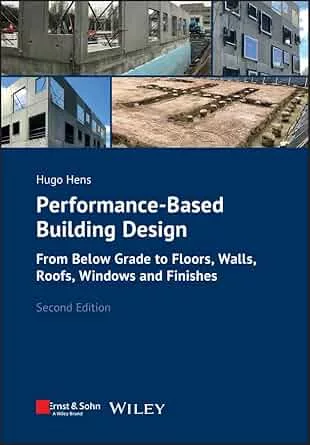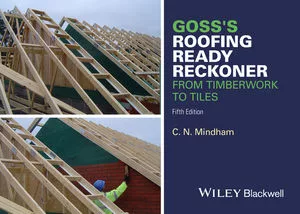From the Deck Up: Fasteners
Below we have assembled a number of questions that are frequently asked at BURSI seminars. We’d like to acknowledge ITW Buildex and Olympic Fasteners for their assistance in providing answers to these questions.
What type of fastener head should I use?
The head of the fastener serves two main purposes. First, it is used to efficiently transfer driving torque into drilling and tapping torque. Secondly, it is used to prevent the fastener from pulling through the plate or substrate.
The type of fastener head selected typically comes down to contractor preference. For metal deck fasteners, the 1/2-inch hex-head and #3 Phillips-head fasteners are the two most popular in the industry. The Robertson square drive also is used in some applications.
The advantage of a hex head is that it is an external drive that allows for greater contact area between the bit and the fastener head. This provides increased driving engagement and can result in less spinouts and a socket life of up to 10 times greater than a Phillips bit.
The advantage of the Phillips is that it has a smooth, rounded head. Although the hex-head fastener is approved for use under most single-ply membranes, many contractors prefer the Phillips-head fastener for this application due to its smoother head.
When I install a screw into a steel deck, does it remove the coating?
The coating is removed, however, the chance of it causing a failure is small. When the screw is installed through a steel deck, the point clears a hole for the screw to thread. The first thread through the deck deforms the deck to match the angle of the thread. The coating will generally be removed from the point of the screw and some may be removed from the first thread. Once the deck has been deformed to match the angle of the thread, the rest of the threads follow that path and little or no additional coating is removed.
Additionally, the portion of the screw that has lost any coating is surrounded by air and should not be encapsulated by any wet roofing material. Also, most manufacturers use multi-layer coatings that are very abrasion-and corrosion-resistant.
What is the difference between a #12 and #15 roofing fastener?
The number refers to the outside thread diameter of the fastener. A #12 typically correlates to 0.215 inch outside thread diameter of the fastener. A #15 diameter is equivalent to 0.265 inch on average. With screws, the numbers go up as the diameter increases. The pullout resistance and shear strength of the fastener also typically goes up as the fastener diameter increases. This often is confused with the way the thickness of a metal deck is described. A typical metal deck is 22-gauge. This is equivalent to 0.030 inch thick. A 26-gauge deck is much thinner at 0.018 inch.
Is it necessary to conduct pullout tests on steel decks?
Most steel decks do not require pullout tests. Pullout tests should be performed if there is any concern regarding the deck’s integrity, particularly in reroofing applications. Pullout tests also should be performed if the project specifications require a grade E deck and the contractor does not have the mill certification or if the deck is certified as grade C.
Is it possible to completely install a fastener
into concrete?
Yes, if you use an ANSI masonry drill bit. ANSI masonry drill bits are slightly larger than a regular drill bit and have a carbide tip. On average, a concrete bit will drill 100 holes into 3000-psi concrete without substantial bit wear. A worn out bit will drill a smaller hole, thus preventing the concrete fastener from being fully installed. The harder the concrete, the quicker the drill bit will wear out. Usually, the older the concrete, the harder it is.
If the roof is wet, should stainless steel screws be used?
Generally, most manufacturers require that wet roofs be replaced. Stainless steel screws cannot solve all problems. They have their place in certain high-humidity environments or under certain corrosive conditions, but will not solve the problem of a wet roof. If the insulation is heavily saturated, using stainless steel screws in a reroof may extend the life of the screws but it won’t do anything to improve the condition of the deck. Using stainless steel screws in certain corrosive conditions may not extend the life of the fastener at all. It may even be less resistant to the specific corrosive element than properly coated carbon steel screws. Before using a stainless steel screw, collect all of the roof details and contact your fastener manufacturer. Also, contact SPRI about its Roof Drying Study and Test Program.
What is the advantage of hitting the top rib of the metal deck?
In addition to being a requirement of Factory Mutual, hitting the top rib of the deck provides a better clamping force. If you hit the low side of the deck, there is a greater chance of damaging the insulation due to the void between the deck and the insulation.
How far does the fastener need to penetrate the deck?
It depends on deck type. For concrete decks, FM requires a 1-inch minimum embedment. It is recommended that any required pilot hole be 1/2 inch deeper than the required embedment. For metal decks, FM changes its standard from 1/2 to 3/4 inch. This change was implemented because larger (#15) diameter fasteners were being manufactured that required a larger tapered section near the point of the fastener. This resulted in a greater space before the first full thread was reached. It is recommended that at least three full threads penetrate the deck.
Why is it important to use a stand-up tool?
There are many reasons to use a stand-up tool to install fasteners and plates. For one, it can significantly increase productivity. Not only can workers install fasteners more quickly, they also will be less fatigued than they would be if they were bending over using a screw gun. Additionally, the use of stand-up tools can reduce the risk of injury and help to retain employees by making their job easier.
Another advantage to using a stand-up tool is that it can improve the quality of the fastener attachment. Most stand-up tools have a depth-setting device to help prevent the fastener from being over- or under-driven.
What is the FM requirement regarding the corrosion resistance of the fastener?
FM specification 4480 requires that the fasteners and plates meet or exceed 15 cycles in the Kesternich Cabinet with no more than 15 percent red rust. One cycle in the Kesternich cabinet is equal to eight hours of being exposed to a high humidity and high acidity atmosphere and 16 hours of drying.
There is no correlation between the number of cycles in the cabinet and the number of years the fastener will last. It is a relative test. Since every application and environment is different, it is impossible to tell exactly how long it will take for the fastener to show signs of corrosion in actual conditions.
What are typical problems with screw installation?
Sometimes the problems are fairly obvious such as when the screw gun is in reverse. Other problems are related to having the wrong fastener for the job. Depending on the deck type, some fasteners will perform better than others. Select the one best suited for the particular project. It is also important that the fastener is the correct length, particularly on retrofit roof projects. Finally, let the point drill the deck. This is especially important on thick, hard metal decks. Pushing too hard will put a lot of pressure on the point and may cause it to overheat and lose its edge. It is better to run the screw gun at lower rpm’s and apply moderate pressure, letting the fastener do the work.
Looking for a reprint of this article?
From high-res PDFs to custom plaques, order your copy today!





